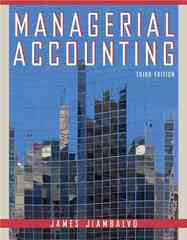Question
1. The responsibility for identifying and deciding the appropriate accounting treatment for contingent liabilities rests with a company's _____.* A. Auditors. B. Legal counsel. C.
1. The responsibility for identifying and deciding the appropriate accounting treatment for contingent liabilities rests with a company's _____.*
A. Auditors.
B. Legal counsel.
C. Management
D. Management and the auditors.
E. All of the above.
2. After a purchase requisition is approved, a _________ must be initiated to purchase the goods or services.*
Purchase order
B. Vendor order
C. Call order
D. Vendor invoice
E. None of the above
3. The two primary classes of transactions in the sales and collection cycle are:*
A. Sales and sales discounts.
B. Sales and cash receipts.
C. Sales and sales returns.
D. Sales and accounts receivable.
E. None of the above.
4. The appropriate and sufficient evidence to be obtained from tests of details must be decided on an:*
A) efficiency basis
B) effectiveness basis
C) audit objectives basis.
D) none of the above
5. For sales, the occurrence transaction-related audit objective affects which of the following balance-related audit objective?*
A) Existence
B) Completeness
C) Rights
D) Detail tie-in
6. For cash receipts, the occurrence transaction-related audit objective affects which of the following balance-related audit objective?*
A) Existence
B) Completeness
C) Rights
D) Detail tie-in
Step by Step Solution
There are 3 Steps involved in it
Step: 1

Get Instant Access to Expert-Tailored Solutions
See step-by-step solutions with expert insights and AI powered tools for academic success
Step: 2

Step: 3

Ace Your Homework with AI
Get the answers you need in no time with our AI-driven, step-by-step assistance
Get Started


